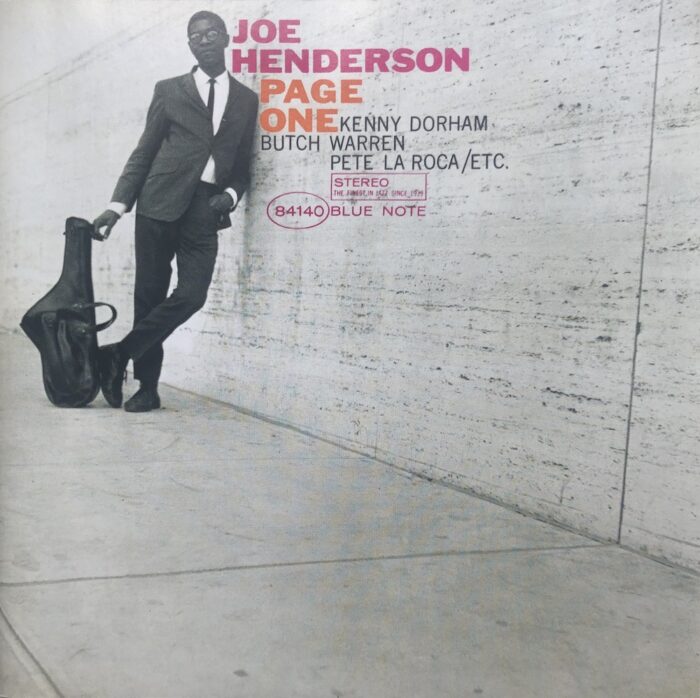
All roads lead to Joe here on Jazz Impressions, as we segue from Pete La Roca’s Basra (1965) to another Blue Note debut as leader, which also features La Roca on drums: Joe Henderson’s Page One (1963).
The tenor’s tenure at Blue Note followed a stint in the Army where Henderson won a talent show and went on to tour the world entertaining the troops. He arrived in New York in 1962 “in a sleek black Mercedes Benz,” as trumpeter Kenny Dorham recalls. That night Dorham and Henderson went to see the great saxophonist Dexter Gordon at Birdland, where Henderson took to the stage and blew everyone away.
Dorham meanwhile had been on the scene since the 1940s, replacing a young Miles Davis in Charlie Parker’s band and joining the original lineup of Art Blakey’s Jazz Messengers. Despite being one of the hardest-working sidemen in the business, recording with Thelonious Monk, Sonny Rollins and Max Roach, musicians were so badly paid in those days that the trumpeter was still working in a sugar refinery until the 1950s.
That night at Birdland in ’62, he met a true musical partner in Henderson, who said of his friend: “We have some kind of vibration going. Even when we play unison lines, it seems we breathe at the same time. That closeness comes, I suppose, from the fact that I’ve liked his playing so long. Way before I came to New York, I’d hoped Kenny would be one of those I could record with.”
Henderson got his wish in 1963 on the Dorham classic Una Mas (released in 1964), the first of five Blue Note collaborations between the harmonious hornmen – plus they both played on Andrew Hill’s revolutionary Point of Departure (1965). But it’s the pair’s keen ear for Latin and Eastern composition that marks the first page in Henderson’s illustrious discography.
Page One‘s typically stylish Blue Note cover lists Henderson, Dorham, La Roca and bassist Butch Warren, and then “etc.” meaning McCoy Tyner – the pianist had just signed to Impulse! with John Coltrane so the situation called for a degree of tact. The album opens on a pair of Dorham compositions: ‘Blue Bossa’ became a standard (and a favourite of Steve Kuhn), and the lovely ballad ‘La Mesha’ is named after Dorham’s daughter.
The four remaining tracks are Henderson originals, with the recently acquainted trumpeter and tenorman trading solos like they’ve known each other forever. Named after a Japanese rickshaw, ‘Jinrikisha’ carries an Eastern flavour and finds Henderson on fiery form; a crackling counterpoint to Dorham’s solo, which displays his unique sense of restraint, evolution of ideas and sweetness of tone. All those years at the sugar refinery clearly paid off.
This warm, inviting record opened the first chapter in Henderson’s 35-year recording career. He had already come a long way since playing in strip joints, and it was still only the beginning.
Hear more of his work on our ‘Sax Machines’ playlist.
If you enjoyed this post and want to stay updated, make sure to subscribe to our Spotify playlist and follow us on Instagram and Twitter!
